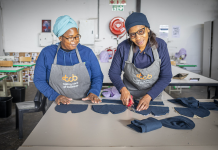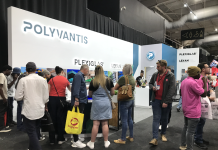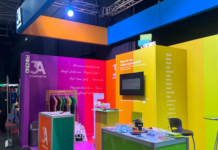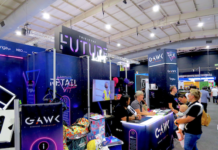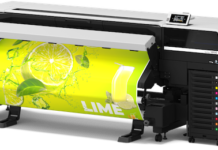Eprofile is showcasing StudioRIP’s inkjet CTP solution at the Sign Africa Cape Town expo, taking place from 15-16 March at the Cape Town International Convention Centre. Exhibited at Epson’s drupa stand in 2016, StudioRIP’s inkjet CTP solution has proven that with the right software, hardware and consumables, inkjet CTP technology can produce stunning quality 175 lpi process colour jobs.
Plates produced by the Droplet to Plate 36 system are almost impossible to distinguish with the naked eye from laser CTP plates, while the printed results are almost identical even under the microscope.
Inkjet CTP was known as the cheap but low quality technology used by garage companies as an entry level solution, only good for printing simple text or non-critical spot colour jobs. With an attractive price that is a fraction of a laser CTP price, and with plate costs around the thermal plate price, the system is appealing for small and middle sized offset printers. This is particularly true for the price sensitive markets of Eastern Europe, Africa, Asia or South America. Having the ability to quickly and easily produce plates in-house without losing quality and without a large investment is a relief for most printers who were suffering since the collapse of image-setting technology.
The system can also be used as a calibrated contract proofing system, as a filmsetter for screen and flexo printers, and as a generic large format printer.
With a small footprint of about 1 x 1.5 metres, the system can serve all common plate sizes, including the popular 770 x 1030mm. Plates come in 0.15, 0.20 and 0.30mm thicknesses, cut in the size required by the customer, in sealed boxes.
The machine can be easily operated as the pins for accurate plate registration are automatically operated by optical sensors. The printer is driven by a professional RIP (with features like imposition, trapping, proofing, ink duct control), and the semi-automatic plate processor only requires the operator to move the plate between the washing and drying tanks and the dryer.
Why aren’t such systems widely used yet if it they’re so good? To find out the answer, it’s necessary to understand the secret behind the crisp sharp texts and smooth 175 lpi halftones:
• Although the system produces conventional positive analogue PS plates, the StudioRIP DTP plates come with an inkjet coating (similar to what the photo papers have) applied in the factory, this way allowing the right quantity of ink to be laid accurately on the plate surface (while most other inkjet CTP technologies suffer from ink saturation and surface tension issues, dramatically limiting the quality).
• The system works on 2880 x 2880 dpi resolution. Using the photo and matte black inks of the Epson SureColor T series printers with StudioRIP’s 4-channel speed enhancement algorithm, this high resolution is paired with a decent speed of 15 A3 plates per hour.
• StudioRIP enhances the halftone quality by controlling the ink density with its patented dynamic density modulation technology, avoids banding and moiré by controlling the head passes and media feed directly with its own customisable interlacing algorithm, and reaches accurate line thicknesses with its ink spread compensation technology. In other words, laser quality is only possible with the fine tuned combination of several technologies, and StudioRIP offers this.
For more information about the expo, and to register online, visit: www.signafricaexpo.com/cape-town/.






